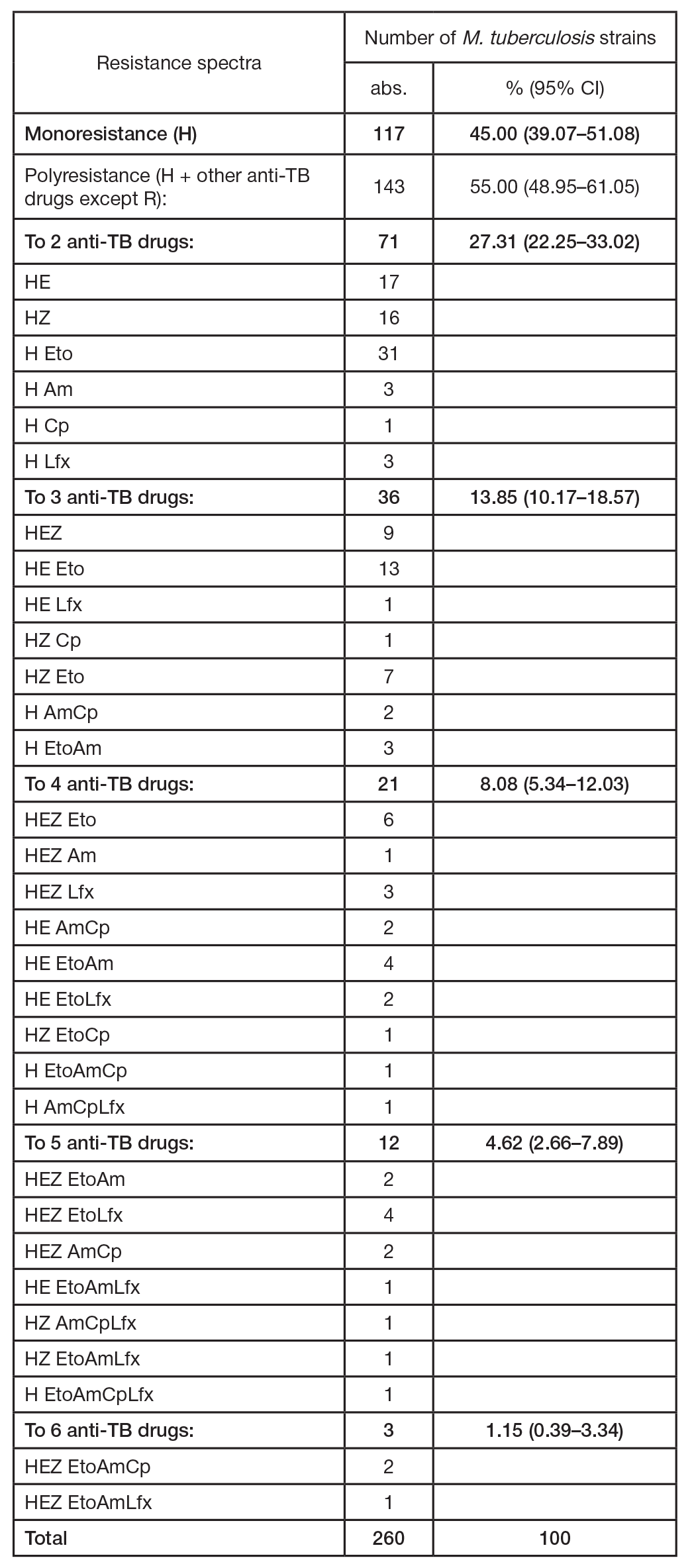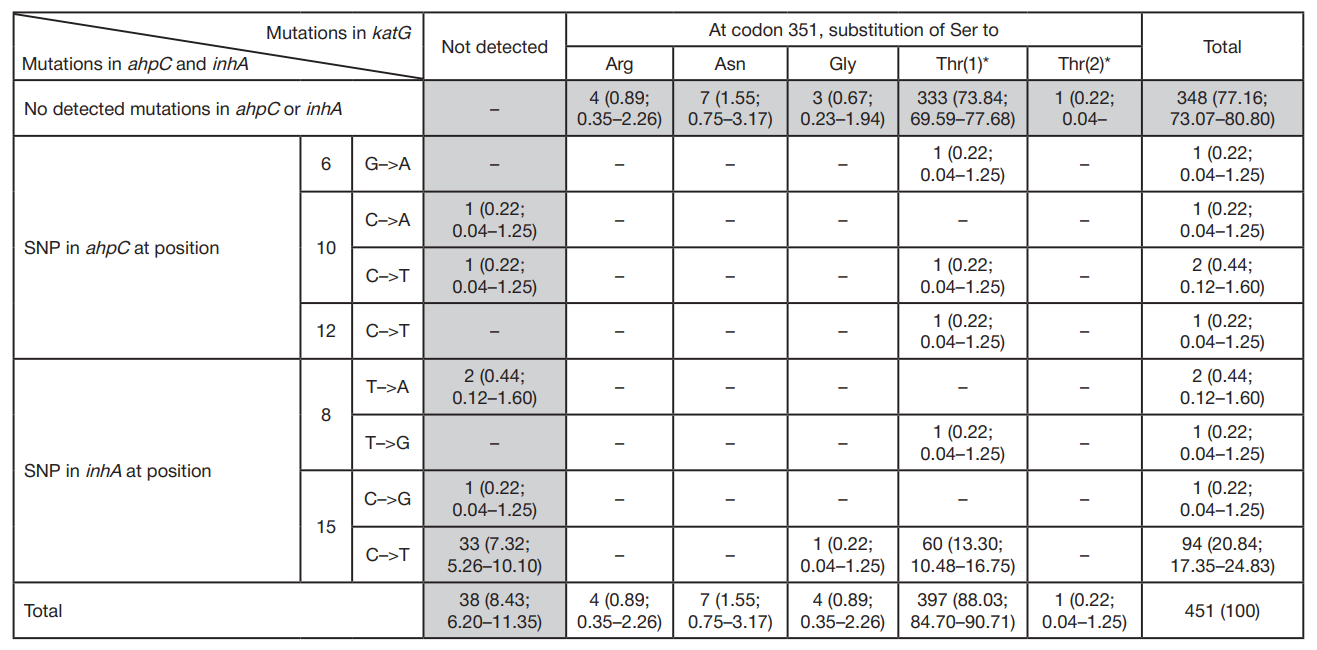
This article is an open access article distributed under the terms and conditions of the Creative Commons Attribution license (CC BY).
ORIGINAL RESEARCH
Isoniazid-resistant Mycobacterium tuberculosis: prevalence, resistance spectrum and genetic determinants of resistance
Laboratory of Biotechnology, Central Tuberculosis Research Institute, Moscow, Russia
Correspondence should be addressed: Sophia Nikolayevna Andreevskaya
Yauzskaya alley, 2, Moscow, 107564; ur.liam@aifosdna
Funding: this study was supported by the Ministry of Science and Higher Education of the Russian Federation and carried out under the Federal Targeted Program for Research and Development in Priority Areas of Development of the Russian Scientific and Technological Complex for 2014-2020, Project № 05.586.21.0065 (Project ID RFMEFI58619X0065).
Author contribution: Ergeshov A, Chernousova LN — study design; Larionova EE, Andrievskaya IYu — data acquisition; Smirnova TG — data analysis; Andreevskaya SN — manuscript preparation, literature analysis. All authors have equally contributed to the discussion of the obtained results.




